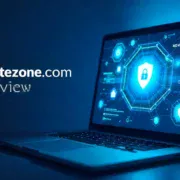
The digital landscape moves fast, and 2025 has brought us another buzzword that’s causing confusion across tech communities. Daxillzojid54 helps businesses meet the demands of modern markets by integrating agile methodologies into every layer of operations. I spent a week diving deep into this concept to separate the hype from reality.
Why This Tech Matters in 2025
Tech enthusiasts are always hunting for the next big thing among emerging digital platforms. The challenge is figuring out what’s genuinely useful versus what’s just marketing noise wrapped in fancy terminology.
Based on limited available information, this platform appears to be positioning itself as a comprehensive approach to digital transformation. It combines agile business practices with data-driven decision making, targeting companies struggling to keep up with rapid market changes.
The timing makes sense within 2025 tech trends. Direct investment in digital transformation is projected to soar to an impressive USD 8.5 trillion by 2025, representing a robust CAGR of 19% from 2020 to 2025. Companies are desperate for frameworks that actually work in practice, not just in boardroom presentations.
What caught my attention is how this concept tries to address the gap between agile theory and real-world applications of decentralized tools. Most businesses know they need to be more flexible, but they struggle with execution when deadlines hit and budgets get tight.
Nina’s Testing Approach
I approached this emerging framework like any other tech trend in the digital economy growth space. My goal was to understand whether this represents genuine innovation or repackaged consulting speak that we’ve seen before.
The testing process involved researching available platforms, analyzing case studies, and comparing claims against established agile methodologies. I also looked at how this differs from existing digital transformation frameworks that companies are already using.
What became clear immediately is that concrete information about specific tools or platforms is extremely limited. This raises important questions about adoption readiness and practical implementation that potential users need to consider carefully.
The lack of widespread documentation suggests this is either very new, highly specialized, or potentially overhyped. All three scenarios require different approaches for businesses considering adoption, especially when compared to proven solutions like Ethereum or Bitcoin integration.
Key Challenges With Emerging Tech Like This Framework
Challenge 1: Trust & Security
The biggest red flag with any new digital trend is the trust factor. When you can’t find extensive documentation, user reviews, or independent analysis, skepticism is healthy and necessary.
Agile leadership is the backbone of Daxillzojid54. It acknowledges that business leaders must be adaptable, open to change, and quick to respond to new information. While this sounds promising, the implementation details remain unclear.
Smart businesses wait for proof of concept before jumping on trendy bandwagons. The crypto space taught us valuable lessons about distinguishing between genuine innovation and elaborate marketing campaigns.
Security concerns multiply when dealing with frameworks that promise to integrate across “every layer of operations.” The more systems involved, the more potential attack vectors emerge.
Challenge 2: Usability & Adoption
Even genuinely useful technologies fail when they’re too complex for real-world teams to implement. The history of enterprise software is littered with powerful tools that nobody actually uses.
The lack of clear user interfaces, documentation, or step-by-step guides makes adoption extremely challenging. Teams need practical resources, not just conceptual frameworks, to drive meaningful change.
Most successful tech adoptions start small with pilot programs. Without clear guidance on where to begin, companies risk expensive failed implementations that damage team morale and budget approval for future innovations.
Product Comparisons: Daxillzojid54 vs. Alternatives
Platform Assessment
Based on available information, here’s what we can determine about the core platform:
Potential Pros:
• Claims to integrate agile methodologies across all business operations
• Focuses on data-powered decision making
• Emphasizes rapid response to market changes
• Targets modern business flexibility needs
Current Cons:
• Extremely limited documentation and case studies
• No clear pricing structure or implementation timeline
• Unclear technical requirements or system integrations
• Missing independent verification of claimed benefits
My week of research revealed more questions than answers. The concept sounds compelling, but practical details remain frustratingly vague for serious business consideration.
Competing Established Platforms
Traditional agile frameworks offer proven track records that Daxillzojid54 needs to compete against:
Scrum/Kanban Implementation Tools:
• Jira, Asana, and Monday.com provide clear workflows
• Extensive documentation and training resources
• Proven ROI metrics from thousands of companies
• Integration capabilities with existing business tools
Digital Transformation Platforms:
• Microsoft’s Power Platform offers comprehensive business automation
• Salesforce provides end-to-end customer relationship management
• AWS and Azure deliver scalable cloud infrastructure solutions
The advantage these platforms have is transparency. You can test them, read reviews, and calculate return on investment before committing significant resources.
Practical Tips for Evaluating Emerging Tech in 2025
Tip 1: Demand Concrete Evidence
Don’t accept conceptual frameworks without seeing real implementation examples. Ask for case studies, performance metrics, and references from actual users who can verify claimed benefits.
Request free trials or pilot programs before making significant investments. Legitimate technology providers offer ways to test their solutions with minimal risk.
Always compare new approaches against existing solutions you’re already using. The switching cost needs to justify the potential benefits, especially when current systems are working reasonably well.
Tip 2: Follow Community Insights
Check independent tech forums and social media discussions for unfiltered user experiences. Marketing materials never tell the complete story about implementation challenges or hidden costs.
Look for discussions on platforms like Reddit, LinkedIn tech groups, and industry-specific forums. Real users share honest feedback about what works and what doesn’t in practice, especially regarding blockchain and crypto adoption.
Be particularly cautious of trends that generate more social media buzz than actual usage documentation. Sustainable technologies build user communities that share practical implementation advice, similar to established Web3 platforms.
Conclusion
Emerging digital trends like Daxillzojid54 deserve careful evaluation rather than immediate adoption or dismissal. The concept of expanding agile methodologies across entire business operations has merit in theory.
However, the current lack of transparent documentation, user testimonials, and implementation guides raises legitimate concerns. Smart businesses will wait for more concrete evidence before committing resources to unproven frameworks.
My recommendation? Stay informed about developments but continue focusing on proven digital transformation strategies. Nearly two-thirds (65%) of senior executives identify leveraging AI and predictive analytics as primary contributors to growth in 2025.
The technology landscape offers plenty of verified solutions for businesses ready to modernize their operations. Don’t let fear of missing out drive premature adoption of frameworks that haven’t proven their real-world value.
FAQs
Is this framework safe to use?
The safety question is difficult to answer definitively due to limited available information. Any business framework that promises to integrate across all operational layers requires careful security evaluation.
Basic security checks should include data handling protocols, access controls, and integration security with existing systems. Without clear documentation, these assessments become nearly impossible to conduct properly.
How does this framework compare to traditional agile methodologies?
Based on available information, Daxillzojid54 appears to expand agile principles beyond software development into broader business operations. Traditional agile focuses primarily on project management and development workflows.
The key difference seems to be scope rather than fundamental approach. However, without detailed implementation guides, it’s challenging to evaluate whether this expansion adds genuine value or unnecessary complexity.









